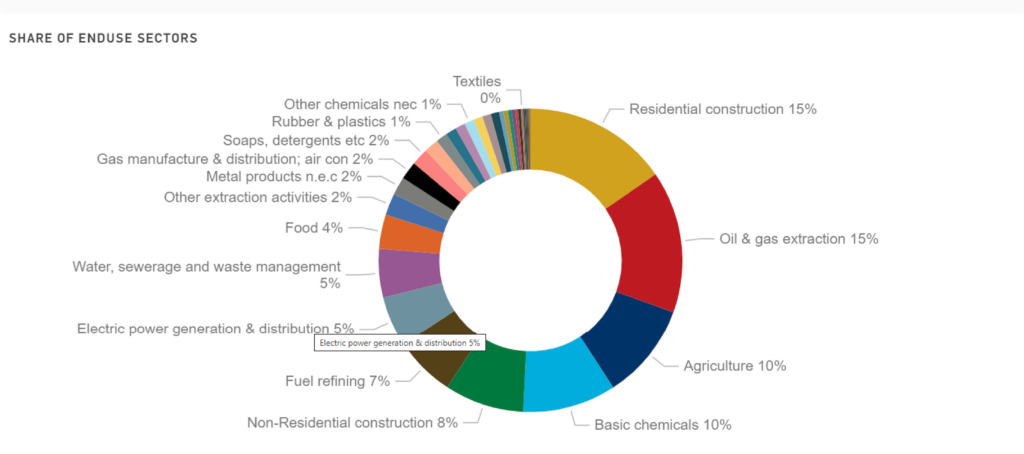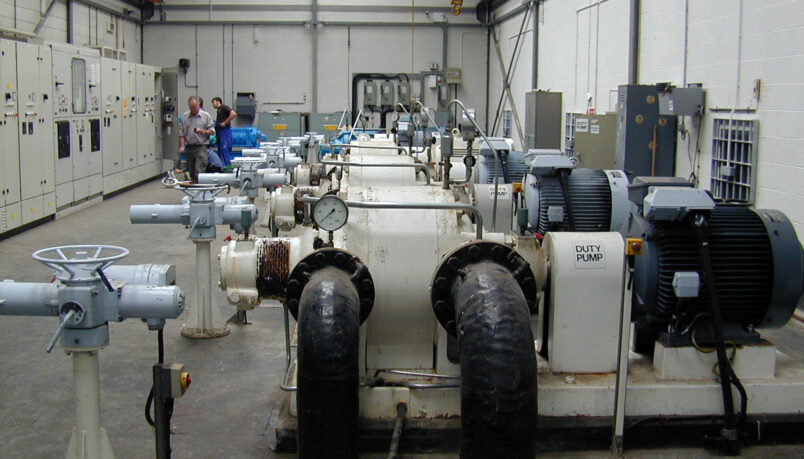Government Affairs
The U.S. Pump Industry is estimated to include 450+ manufacturers of various sizes operating in 38 states. U.S. pump sales are estimated at 10 Billion* annually and involve motorized pumps used in these industries.

The Hydraulic Institute represents over 85% of domestic manufacturers and is the leading voice of Pump Manufacturers, Suppliers and System Integrators in US. The industry includes the companies that manufacture general purpose pumps and pumping equipment (except fluid power pumps and motors), such as reciprocating pumps, turbine pumps, centrifugal pumps, rotary pumps, diaphragm pumps, domestic water system pumps, oil well and oil field pumps and sump pumps. View Distribution of U.S. Pump & Pumping Equipment Manufacturers Map.
HI’s regulatory and advocacy work tracks the issues that affect the industry and underpins the advances the Pump Industry has made in support of:
Energy Efficiency
Pumps are critical infrastructure and vital components of modern infrastructure. Efficient pumping systems are critical to achieving sustainability goals.
Certain Clean Water Pumps
HI works with members and others, to create consensus on the technical parameters and efficiency standards among manufacturers, energy advocates and other stakeholders. In 2016 the US Department of Energy (DOE) issued the first-ever Energy Conservation Standard for certain Clean Water Pumps. Since 2011, the Hydraulic Institute has led the effort to organize the pump industry by facilitating the data gathering and standards development required for rulemaking process and negotiate the final rule with the DOE on behalf of the industry.
In 2020, DOE began the review process to update the regulations. Review DOE notices to see the most up to date information and DOE updates to the regulation:
Pump Energy Index Calculator for Certain Clean Water Pumps
For pumps within the scope of the clean water pump final rule, HI has developed a calculator to determine the Pump Energy Index (PEI) of a single pump tested to the appropriate section of the Uniform Test Procedure.
The Hydraulic Institute also has standards and programs to support the clean water pump regulations and accelerate the adoption of energy efficient pumping solutions. The Regulatory Related Programs PDF is a series of three white papers summarizing the DOE regulation for certain clean water pumps and related test lab approval and energy rating programs.

Circulator Pumps
On November 30, 2016 a 15 member Appliance Standards & Rulemaking Federal Advisory Committee (ASRAC) working group for circulator pumps has concluded its work in development of Term Sheets, recommending standard levels and test procedures for pumps. In 2021, DOE restarted the public process of moving the terms sheets to a regulation. Review the DOE notices to see the most up to date information regarding DOE’s activities on related to regulations for circulator pumps.
Dedicated Purpose Pool Pumps
The U.S. DOE has published a Direct Final Rule and Test Procedure Final Rule for Dedicated Purpose Pool Pumps. The test procedure effective date is September 6, 2017 and the compliance to the test procedure for representations of the Weighted Energy Factor (WEF) and other test procedure metrics is required on or after February 5, 2018. Compliance with the Direct Final Rule is required on July 19, 2021. Review the DOE notices to see the most up to date information.
Domestic Manufacturing
Complicated Mandates & Impact
With global supply chains and increasing domestic content requirements for federally funded programs, navigating the mandates and the markets they apply to can be a challenge for pump manufacturers. Learn more about the complicated mandates and impact in our infogram.
Advocacy Activities
HI provides comments on current regulatory and legislative issues:
In addition to letters and comments, HI’s Advocacy activities include:
- Annual legislative visits where a HI Delegation meets with Legislators on behalf of HI
- Support of HI member advocacy efforts to maintain effective relationships with their legislators;
- Participation in industry coalitions; lobbying on legislative issues, administrative policies and regulations that impact manufacturers of pumps and pump system equipment.
- Members interested in working with HI’s Government Affairs Committee and helping craft HI’s advocacy agenda should contact Michael Michaud at mmichaud@pumps.org.
To support the needs of its members, HI also has related activities:
